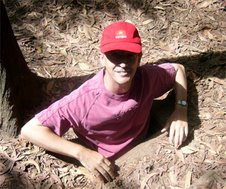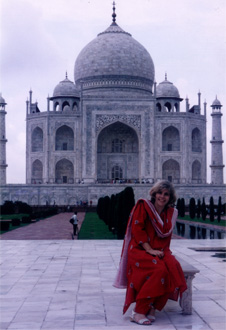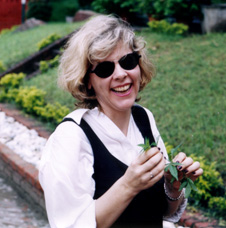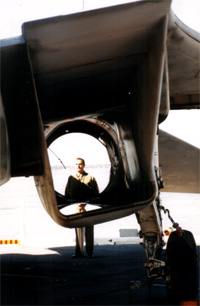Bloody Feather Quilts
Well, the Joseph Sherfy story is starting to piece itself together. The material is a little thin at this point but the Library of Congress has been helpful, so too some resources at
Some sources hint that Joseph Sherfy was a “Reverend” but I have yet to determine if that is the case. An index of all pastors and ministers in the
In other parts of the country and at later times large numbers of Sherfys appear as Baptist Clergy. And in a war notorious for pitting brother against brother it is interesting to learn that two Tennessee Sherfys were Reverends – one fought for the south and one for the north. Their uniforms sit side by side in a museum in
Back to
“Every dwelling and farmyard left behind in the wake of the withdrawal by Longstreet’s troops had been ransacked. Notably Joseph Sherfy’s brick house on the
Joseph and his son returned on the 6th, the rest of the family the following day. It would not be too much of a stretch to guess that the Sherfys came back to find their home was a carnage house, with blood now black and congealed, body parts and gore through the house. “Filth of every description” should probably be read as a polite euphemism for human offal, refuse and other waste. Photos attest to the bloated bodies left in their fields.
To make matters worse the their barn which burned down still contained the charred of those burned alive in there. A member of the 77th NYI Referring to Sherfy’s barn burnt by cannon fire on 3 July 1863: “As we passed the scene of conflict on the left was a scene more than unusually hideous. Blackened remains marked the spot where, on the morning of the 3rd, stood a large barn. It had been used as a hospital. It had taken fire from the shells of the hostile batteries, and had quickly burned to the ground. Those of the wounded not able to help themselves were destroyed by the flames, which in a moment spread through the straw and dry material of the building. The crisped and blackened limbs, heads and other portions of bodies lying half consumed among the heaps of ruins and ashes made up one of the most ghastly pictures ever witnessed, even on the field of war.”
This is all getting a bit morbid I suspect. But imagine these people with their teenage family (and younger) coming home to confront and clean up this mess. We understand the people of Gettysburg, due to stench from the dead animals, men, blood, piles of amputated limbs, carcasses from the animals butchered by soldiers, outhouses and sinks (latrines) filled to capacity “most everyone walk around with a bottle of pennyroyal or mint oil” to alleviate themselves from the noxious odours and that many folks were unable to open their windows until the effects of frost and cold weather arrived (thanks Ed). That gives us some idea of what the Sherfys would have had to tolerate. What impact did this have on the kids?
So imagine if you will the appalling things this family confronted. Bloody quilts. Their clothes and fittings bloodied and scattered in bloody heaps across their yard and through their house. Blood covered floors and walls. Stinking carcasses. Severed limbs. Human offal. Life could hardly ever be the same. There is more to the Peach Orchard than eating those peaches!




















1 comment:
By the 4th generation, there were three spellings of the Scherffig name: Sherfey, Sherfy, Sherfee.
I am a 7th generation, direct descendant of Kaspar Scherffig and Magdalena (Heilman) Sherfig [sic.] through his third son (8th of 15 children) Jacob, born March 4,1769, and Catherine (Bosserman) Sherfy (1773-1844). Their son Simeon (1814-1850) married Lucretia Childs(Shepherd) Sherfy (1816-1888). Simeon and Lucretia's 6th child (first boy) was John Howard Sherfy (1849-1892). John Howard Sherfy and Laura (Tittsworth) Sherfy (1849-1914) had four daughters: Stella, Marion, Alice and Edith. Stella (Randolph) Sherfy (1876-1961) was my grandmother. Stella married Hans Theodor Hansen (1867-1944), who changed their family name to Millington just before WW I. They had four children: Cedric, Elinor, Theodore, Jr. and Meredithe. My father, Theodore Hansen Millington, Jr. (1911-1999)married Irene (Johnson) Millington (1911-1999) and had two children: Ann (Millington) Palmer (1941- ) and Peter Sherfy Millington (1945- ).
I have condensed this geneology from THE SHERFEY FAMILY in the United States 1751-1948, an historical and geneological record of 2,500 names by William Emory Sherfey.
I remember my grandmother telling me about the life at Gettysburg and gave me a Union cavalry sword that had been found in the apple orchard. My understanding of the Civil War years was that Rev. Joseph Sherfy, Stella's grandfather, sold or gave the old, stone house to the Rose family before the war, hence its current name as The Rose House.
Joseph built a new house and barn, the one existing today on the Emmetsburg Road. Apparently, Joseph's mother and grandmother remained in the 12-room Rose House. The Sherfy House barn was used by Confederate troops as a field hospital until they withdrew in retreat. It's not clear who burned it down. The barn of the Rose House had been used as a field operations post with snipers by the Confederates so it was a primary Union artillery target for the three days of battle.
The Gettysburg Museum has the last remaining canned (2) peaches from the surviving trees in an original Mason jar. In 2006, the Museum's curator said that they had completed restoring the apple orchard (between the Sherfy House and the Rose House) and that the peach orchard would be replanted within a couple of years. Before the war, Joseph Sherfy's property included the Apple Orchard, the Peach Orchard, the Wheat field, Little Round Top, The Devil's Den and Plum Run. Kaspar Scherffig and Magdalena were Anabaptist refugees from Saxony living in Holland. They arrived at Pope's Creek, Virginia,near the Custis Plantation, in 1754.
They joined the small community of Dunker Brethern. Avowed pacificists, they passed on to the Sherfy generations this religious tradition. My grandmother Stella was a Quaker in her later years.
The Brethren tradition was quite strong around Gettysburg in the 1850's. Joseph and Mary, who were running the peach business, evacuated their home with their children just before the July 1963 Battle of Gettysburg. They left the morning of July 2 for the John Trostle farm, to the south of both roundtops, but had to leave there for Littlestown, away from the fighting. Joseph and son Raphael returned to the farm on July 6 to begin salvaging what remained. Brethren communities across the states knew of and acknowledged this encounter with war by Rev. Joseph Sherfy and his family. Some of the photographs taken during the next few days in Gettysburg show dead,, bloated horses and livestock lying in rows in areas around town. The Museum has very little items from the Sherfy home, most likely because anything that could be restored and used would have been picked up by the family.
The descendants of Kaspar and Magdalena seem to have spread out throughout the country. Magdalena had 15 children, Jacob had 13, and the others had very large families.
One group descended from Kaspar and Magdalea's 5th daughter Maria (1768-1858) married Nicholas Onstott (1763-1829). Readers of Abraham Lincoln's student years may recall that he lived for some time with the Onstotts in DeWitt, Illinois while studying law. Ann Rutledge lived just up the street, too.
Six degrees of separation, eh.
Post a Comment